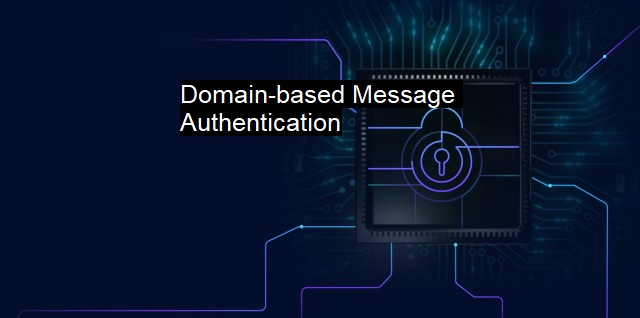What is Domain-based Message Authentication?
DMARC: The game-changing email security protocol in the fight against cyber threats
Domain-based Message Authentication or DMARC is an essential protocol in the realm of email, cybersecurity, and antivirus. It is designed to protect email senders and recipients from different forms of spam, phishing, and cyber-attacks linked with email communication.DMARC is an acronym for "Domain-based Message Authentication, Reporting & Conformance". It stands as the aggregated technological advancement of two other vital email security protocols - the SPF (Sender Policy Framework) and DKIM (Domain Keys Identified Mail). DMARC builds upon these protocols to provide a robust framework for email security by establishing a method for receiving mail servers to check the authenticity of incoming emails.
SPF authenticates the path mail content took to get to the designated recipient, making sure it’s trusted, while DKIM attaches an encrypted digital signature to the email content. This signature ensures that the content hasn't been modified during transit. Then, DMARC utilizes these two security mechanisms, checking both SPF and DKIM, to verify the domain authenticity and alignment. If either test during the DMARC check fails, it employs a policy which the domain owner configured (like reject, quarantine, or no action).
Seeing its necessity, it's essential to decipher how DMARC functions. During the email process, when an email is received, the incoming server initiates an SPF check and a DKIM check. Following these checks, it carries out the DMARC check - technically validate if the domain name in the 'From' heading is the same as the domain specified in the SPF and DKIM checks. If this DMARC check passes, the email is validated, and as such, flagged as reliable and directed to the recipient's Inbox; but if not, the previously configured DMARC policy by the domain owner comes into action.
It's crucial to note that DMARC brings immense added benefits to cybersecurity and antivirus. Firstly, it increases the trust factor - email recipients can ensure that the emails they are receiving are from a validated domain and are not spammy or malicious. Secondly, it lends protection from phishing attacks. Since phishing scams require the impersonation of existing trusted domains, the DMARC ensures its validation through SPF and DKIM checks; thereby reducing the chances of phishing attacks to nearly zero.
DMARC also produces comprehensive reports about these email authentications - giving the domain owners in-depth visibility about who is sending email on their behalf, whether phishers are attempting to spoof their domain, and even if legitimate email is failing authentication tests. These reports are invaluable for maintaining a secure domain, shipshape email deliverability, and a robust defense against online brand attacks and abuse.
Lastly, DMARC fosters enhanced deliverability. A domain with solid SPF and DKIM validation and DMARC in place often gets rated higher in terms of trust by receiving email servers. This aspect inevitably results in a higher rate of successful email deliverability, which is an indirect yet tangible benefit witnessed in organizational and marketing communication.
While DMARC offers impressive core benefits, like many cybersecurity measures, it demands careful adoption and management. Misconfiguration can sometimes result in legitimate emails being rejected, which is where the importance of IT specialists and cybersecurity experts shines through. Yet, the perks it harbors guard against spam, phishing, and other email-associated threats, surpass these hurdles - marking DMARC as an indispensable tool in the security landscape.

Domain-based Message Authentication FAQs
What is domain-based message authentication?
Domain-based message authentication, also known as DMARC, is an email authentication protocol that helps prevent the spread of spam, phishing, and other types of email-based cyber attacks by detecting and blocking fraudulent emails.How does DMARC work to prevent email spoofing?
DMARC works by allowing email receivers to verify the authenticity of emails by checking various email authentication mechanisms, such as Sender Policy Framework (SPF) and DomainKeys Identified Mail (DKIM). It also provides a framework for email senders to specify their preferred email handling policies, which can help prevent email spoofing and abuse of their email domains.Why is DMARC important for cybersecurity and antivirus protection?
DMARC is important for cybersecurity and antivirus protection because it helps prevent fraudulent emails from reaching users' inboxes, which can greatly reduce the risk of phishing attacks, malware downloads, and other types of email-based cyber threats. By implementing DMARC, organizations can improve their email security and protect their users from potential harm.How can organizations implement DMARC for better email security?
Organizations can implement DMARC by configuring their email servers to use SPF and DKIM, and by publishing a DMARC policy that specifies how email receivers should handle their emails. They can also monitor and analyze DMARC reports to identify and address any issues with their email authentication setup. Implementing DMARC requires technical expertise, so organizations may need to seek the help of a cybersecurity professional to set it up correctly.| | A | | | B | | | C | | | D | | | E | | | F | | | G | | | H | | | I | | | J | | | K | | | L | | | M | |
| | N | | | O | | | P | | | Q | | | R | | | S | | | T | | | U | | | V | | | W | | | X | | | Y | | | Z | |
| | 1 | | | 2 | | | 3 | | | 4 | | | 7 | | | 8 | | |||||||